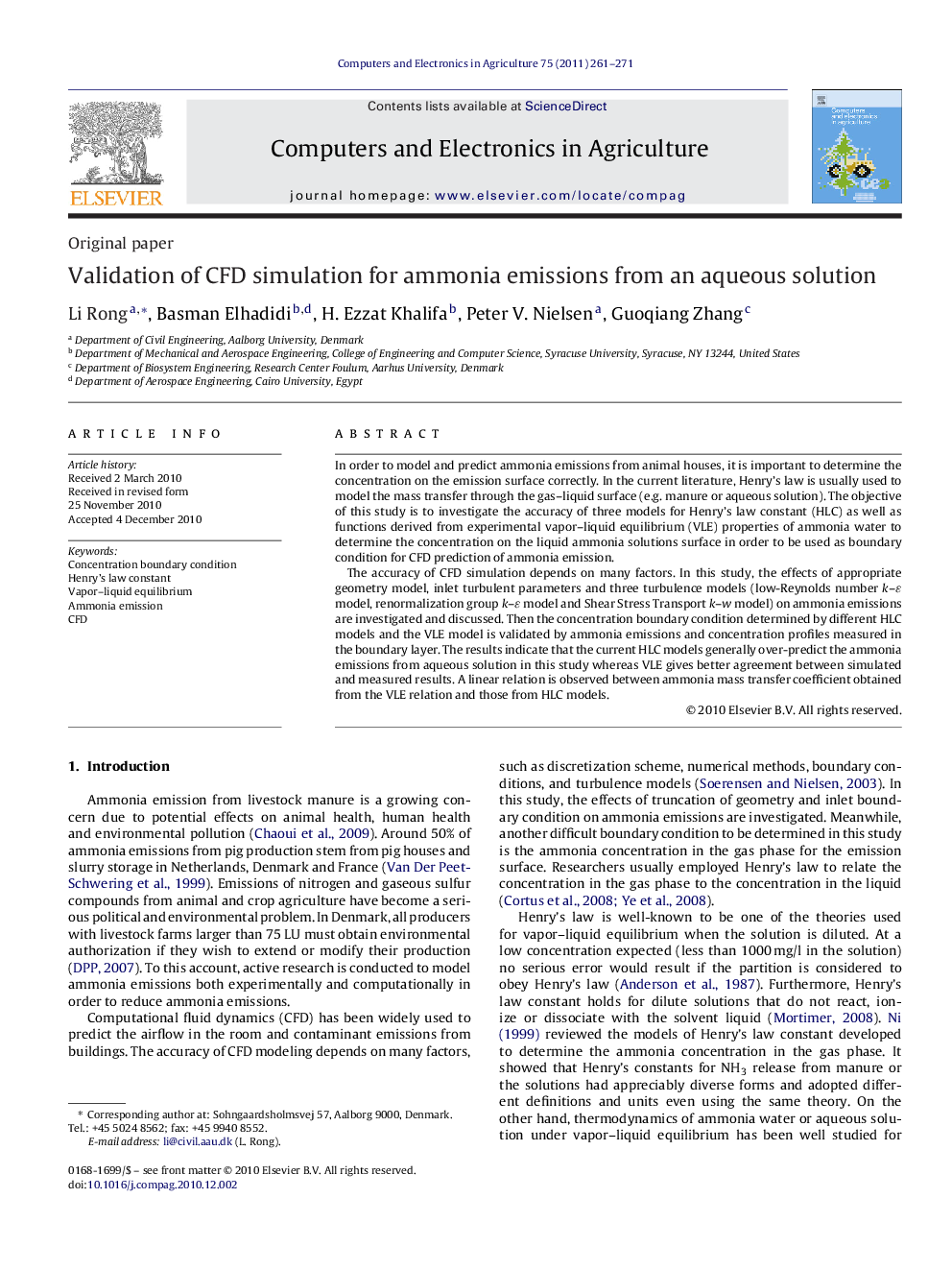| کد مقاله | کد نشریه | سال انتشار | مقاله انگلیسی | نسخه تمام متن |
|---|---|---|---|---|
| 85272 | 158935 | 2011 | 11 صفحه PDF | دانلود رایگان |

In order to model and predict ammonia emissions from animal houses, it is important to determine the concentration on the emission surface correctly. In the current literature, Henry's law is usually used to model the mass transfer through the gas–liquid surface (e.g. manure or aqueous solution). The objective of this study is to investigate the accuracy of three models for Henry's law constant (HLC) as well as functions derived from experimental vapor–liquid equilibrium (VLE) properties of ammonia water to determine the concentration on the liquid ammonia solutions surface in order to be used as boundary condition for CFD prediction of ammonia emission.The accuracy of CFD simulation depends on many factors. In this study, the effects of appropriate geometry model, inlet turbulent parameters and three turbulence models (low-Reynolds number k–ɛ model, renormalization group k–ɛ model and Shear Stress Transport k–w model) on ammonia emissions are investigated and discussed. Then the concentration boundary condition determined by different HLC models and the VLE model is validated by ammonia emissions and concentration profiles measured in the boundary layer. The results indicate that the current HLC models generally over-predict the ammonia emissions from aqueous solution in this study whereas VLE gives better agreement between simulated and measured results. A linear relation is observed between ammonia mass transfer coefficient obtained from the VLE relation and those from HLC models.
Research highlights▶ Choosing CFD models for estimating ammonia emission from aqueous solution. ▶ Using Henry's law constant and vapor–liquid equilibrium properties to estimate the gas phase ammonia concentration above aqueous solution and finding that Henry's law constant models over predict ammonia emission and empirical formula's describing of vapor–liquid properties in absorption equipment performs better. ▶ Observing linear relationship of ammonia mass transfer coefficient determined by using Henry's law constant and vapor–liquid equilibrium properties.
Journal: Computers and Electronics in Agriculture - Volume 75, Issue 2, February 2011, Pages 261–271